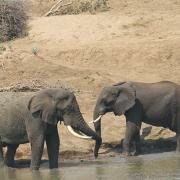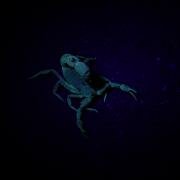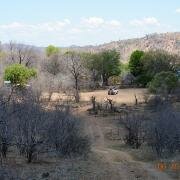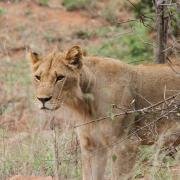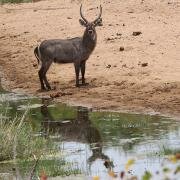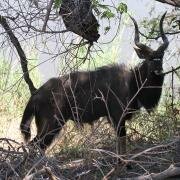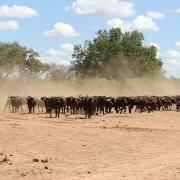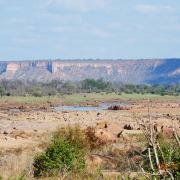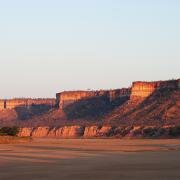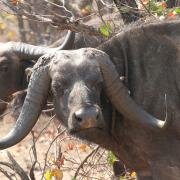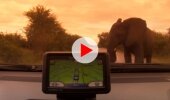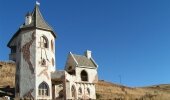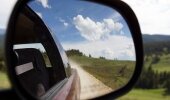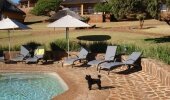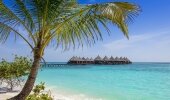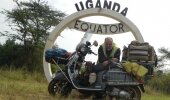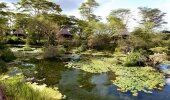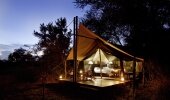Words & Photos: Xen & Adri Ludick
After our unforgettable experience during May 2013, we decided to return to Gonarezhou National Park in the south-eastern part of Zimbabwe. Friends of ours, who had just returned from a visit to Gonarezhou, reported that they hadn’t see any animals. This was unthinkable, and served to reinforce our decision to visit this park once again to see the contrast in seasons and suss out the animal situation.
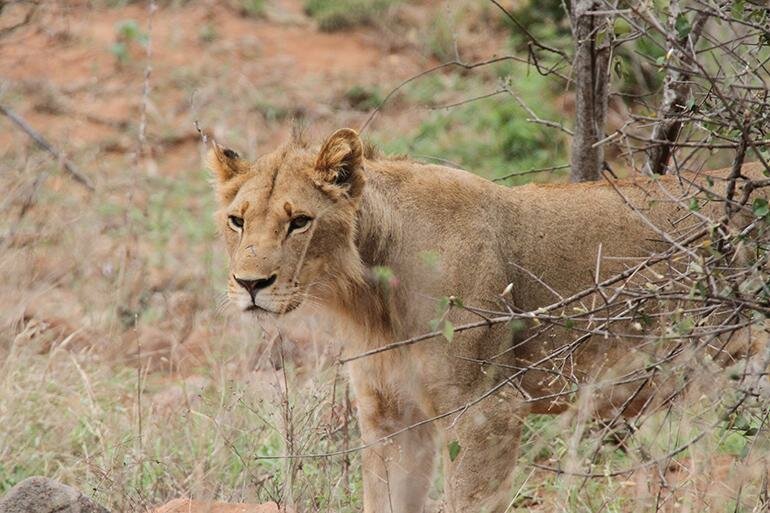
We spent our first evening at Punda Maria, in the Kruger National Park, enjoying the tranquility and availability of great camping spots that come with travelling out of peak season. We set-up camp right next to the fence, overlooking a waterhole. This afternoon, an elephant came so close that we could literally touch it and buffaloes continuously drank at the waterhole. At night, the crystal-clear laugh of the hyenas kept us entertained. Leaving early the next morning, we came across a huge black mamba sunning itself on the road close to the exit gate, confirming that we were indeed back in nature.
We entered Mozambique through the Pafuri Border Post and after about 1.6 km, we turned left and followed the locals’ tracks through the bush to the Limpopo River. We easily crossed the Limpopo River, as well as the dry riverbed of the Nuanetsi River. At the Chicualacuala Border Post, our progress was not as smooth. I was photographing a group of women pushing a trolley with water cans and did not realise that the ‘official’s office’ at the gate was in the picture. When an official wanted to confiscate my camera, I refused to give it to him and tried to show him that I had deleted the photo. The sergeant in charge, who couldn’t speak English, then proceeded to read from his cell phone to tell me that I was not allowed to take pictures of government buildings. When the translator arrived later, I apologised, however they kept us for about an hour as they went through our vehicles. We also had to wait for an official to arrive and stamp our passports. The Zimbabwean Sango Border crossing was smoother, although begging was the order of the day. It took us about three hours to get through both border posts.
After about 15 km, we crossed the railway line and entered the southern part of Gonarezhou from Mabalauta. Immediately, it felt like a different world. The area was extremely dry and had no undergrowth or vegetation; the trees appeared to be dead branches. Arriving at Mabalauta Campsite’s reception, we were greeted by a very friendly young man. He informed us that the electricity had been off for about two days and they could not supply water. Fortunately, we had filled some of our water containers at Punda Maria, so we decided to stay and camped at Mabalauta Campsite 3, overlooking the Nuanetsi River that had very little water flow.
The next morning we went on a game drive and the devastation caused by the drought was once again evident. The few animals that we saw were wild and ran away as soon as they saw us, but the highlight of the day was seeing a huge herd of buffalo charging up the hill. That evening our peace was disrupted when a 4x4 club entered the campsite. Within minutes, the campsite was lit up like a stadium, their lights were that bright, and they would drive the 40 m to the ablution facility. We were very happy to leave early the next morning and not have to listen to their loud activities.
Following the railway line towards Boli, we then turned north to Chipinda Pools. In some areas, it was so barren that it appeared as if we were travelling on the moon. We couldn’t imagine how the people survived in this area. From there, we easily crossed the Runde River and made our way to Chipinda Pools Campsite. The contrast from when we were here in the rainy season, in May, to what we saw before us can’t be described in words.
As we approached camp #5, we were welcomed by a very relaxed nyala bull. Our campsite didn’t have much shade, but we were lucky enough to have cloudy weather for the next two days and this helped a lot. We had purchased Scorpion torches for the trip and couldn’t wait to use them. When we did, we were more than surprised to see how many scorpions there were in the area.
The second evening brought with it too many interesting visitors: red romans, a huge false button spider, a scorpion scuttling around us, and many other creepy crawlies to mention. That night it started to rain. If the rain or the growing moon had anything to do with our increasing number of visitors, we are not sure, but it was a scary experience as we sat with our feet in the air. Thankfully, the sounds of the hippos and elephant grazing on the opposite riverbank kept our minds off the little critters and entertained.
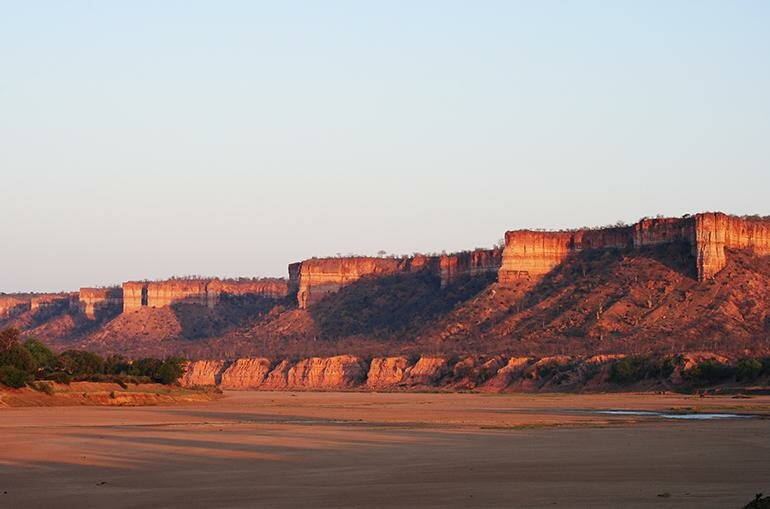
On our last evening, we had elephants grazing around our vehicles and we saw an African civet close to our camp. Our game drives were filled with wonderful sightings of elephants, zebra, nyalas, and the most kudus, big and small, that we have ever seen.
The next day we travelled through the Runde causeway to Director’s Campsite. Along the way, we stopped to look at Bhenji Weir, one of the transit campsites that had been destroyed by a fire. Here we saw the same anthills that we’d seen on the Pombadzi Wilderness Trail, and it is still strange to see these anthills in the middle of nowhere and only at these two places. Whilst listening to Laurika Rauch signing about yellow paw-paws and sunshine, we noticed the bright yellow patches of Mopani pomegranates amongst the dead, dry landscape - a beautiful picture that we had noticed a few times. We spent two nights at Director's camped under a huge nyala tree, and on both nights we heard lion, hyena, and jackals.
The next day, we travelled through the changing landscape to the Chilojo Cliffs lookout point, and this will always remain an unforgettable experience. All along the escarpment it was surprisingly green and lush, in stark contrast to the rest of the park, and we marvelled at the giraffe, zebras, ostrich, and elephants scattered across the plains below us. From there, we headed to where the Runde and Save Rivers meet. The river was very shallow but inviting and we couldn’t resist taking a dip to cool off, as the temperature had reached a scorching 36 degrees.
The contrasts of the landscape never offered us the same canvas. From grass that looked like manicured lawns and green trees along the river beds, to complete dryness. However, we saw animals everywhere we went. Close to Lisoda, our next campsite, we saw a group of elephants and the smallest little elephant we had ever seen taking shelter under a huge wild mango tree. The moment the elephants noticed us, they surrounded the small baby elephant protectively. Later that night, we heard what sounded like a 'meeting' between some lions and elephants, and could just imagine how protective the group would be of the baby elephant in a life-threatening situation.
Evenings at Chiloyo Cliffs Campsite were a pure delight as we watched two groups of female elephants, with quite a few young ones, come down from the cliffs to the river to drink water. It was the most beautiful picture, and with the surrounding scenery we had the opportunity to take some amazing photographs.
Gonarezhou never disappoints us. Every evening when the sun sets and the peace of the night greets us, we sit in anticipation of what the darkness will offer us. Beside a roaring fire, we enjoyed the sounds of the night jars, birds, geckos, predators, sometimes elephants, and of course the loud impalas, but mostly the sounds that you try so hard to identify, yet remain foreign. Those are the ones that take your imagination to unknown places. The early mornings were equally as captivating. We filmed a cheetah walking through our campsite at Lisoda, as well as buffalo grazing peacefully around us and spotted hyenas trying to scavenge.
As we left Gonarezhou, the tint of green, due to the soft rain that had fallen, turned the dry, dead landscape into a new landscape that gave birth to the beauty of spring. Gonarezhou did not disappoint and once again, we found more reasons to return.
